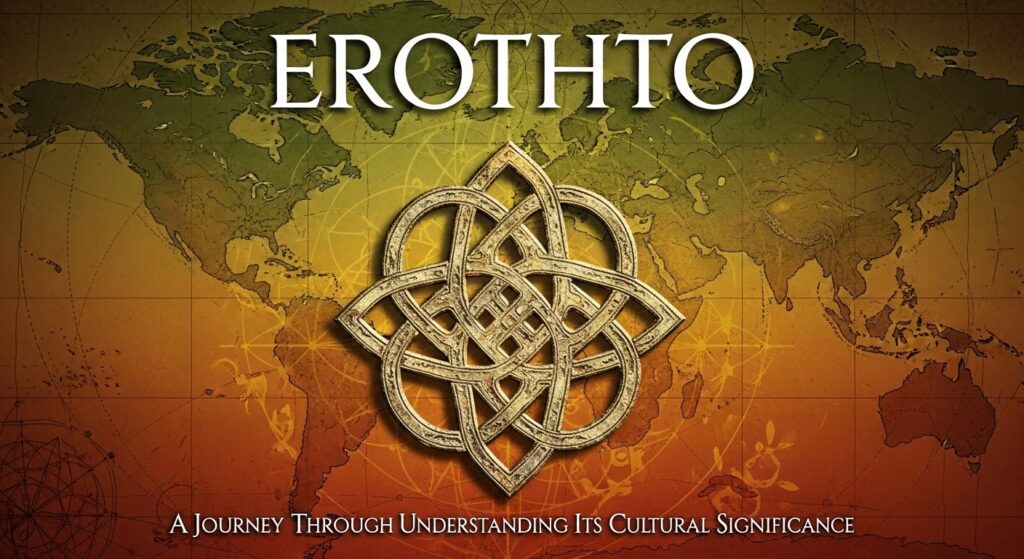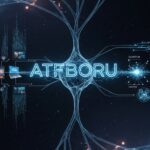Erothto is a term that carries weight, history, and intrigue. It has roots that stretch deep into ancient civilizations, weaving through cultures and traditions like a vibrant tapestry. But what exactly lies behind this enigmatic word? As we embark on this journey of discovery, we’ll peel back the layers of Erothto to reveal its rich cultural significance and how it continues to resonate in today’s world. From its ancient origins to modern interpretations, Erothto invites us to explore not just what it means but why it matters. Buckle up as we dive into the fascinating story of Erothto!
The cultural significance of Erothto in ancient civilizations
Erothto held a prominent place in ancient civilizations, often revered as more than just a concept. It symbolized the connection between humanity and the divine, bridging realms that were otherwise thought to be separate.
In various cultures, Erothto was intricately linked to rituals and ceremonies. These practices highlighted its importance in community bonding and spiritual pursuits. People sought guidance through it, believing that understanding Erothto would lead them toward enlightenment.
Ancient texts frequently referenced this notion as essential for moral conduct and societal harmony. Philosophers debated its meanings, shaping ethical frameworks that still resonate today.
Artifacts from this era depict scenes related to Erothto, illustrating how deeply embedded it was in daily life. Temples dedicated to honoring its essence showcased elaborate designs meant to invoke reverence among worshippers. This rich tapestry of beliefs reveals a deeper appreciation of existence within those ancient societies.
Erothto’s impact on modern culture and society
Erothto has carved a unique niche in contemporary culture, influencing various artistic expressions. From literature to visual arts, it serves as a rich source of inspiration for creators seeking depth and complexity.
In the realm of fashion, designers draw on Erothto’s themes to craft garments that resonate with emotional undertones. This connection between style and symbolism fosters conversations about identity and heritage among diverse communities.
The digital age has also transformed how we perceive Erothto. Social media platforms amplify its reach, allowing individuals to share interpretations that bridge generational gaps.
Moreover, Erothto’s lessons are relevant in discussions surrounding mental health and self-awareness today. Its narratives encourage introspection and understanding—a vital aspect of modern societal challenges.
Controversies surrounding Erothto and its portrayal in media
Erothto has sparked intense debate in various circles, particularly concerning its representation in film and literature. Critics argue that mainstream media often misconstrues its original meaning, stripping away the depth of its cultural roots.
Some portrayals emphasize sensationalism over authenticity, fueling misconceptions. This dramatization can lead to a skewed understanding among audiences unfamiliar with Erothto’s historical context.
Moreover, discussions around appropriation arise when creators outside the culture use Erothto themes without proper acknowledgment or insight. Such actions can dilute its significance and perpetuate stereotypes.
Social media platforms amplify these controversies as voices from different backgrounds share their perspectives. These conversations reveal an ongoing struggle for accurate representation while emphasizing how cultural narratives evolve through public discourse.
As viewers consume more content about Erothto, they navigate complex layers of meaning influenced by both tradition and modern interpretation.
How the meaning of Erothto has evolved over time
Erothto has undergone a fascinating evolution, shifting from its original meanings to encompass broader interpretations. Initially rooted in ancient beliefs, it symbolized connection and community among early civilizations.
As societies changed, so too did the perception of Erothto. It began to reflect personal journeys and individual experiences rather than just collective identity. This shift mirrored the transition toward more individualized expressions in art and culture.
In modern contexts, Erothto represents resilience and adaptability. The concept now resonates with those navigating life’s complexities, serving as an emblem of growth amidst challenges.
The digital age has further influenced this transformation, allowing for diverse representations across platforms. Today’s narratives surrounding Erothto are rich with layers of meaning that invite exploration and reinterpretation by each new generation.
Exploring Erothto’s symbolism and hidden messages
Erothto is rich in symbolism, often representing the duality of human experience. It delves into themes of love and conflict, creation and destruction. This complexity allows for a deeper understanding of its cultural roots.
Hidden messages within Erothto often reflect societal values and moral lessons from ancient times. Artifacts depicting Erothto reveal insights about rituals or beliefs that were integral to those civilizations.
Moreover, the imagery associated with Erothto serves as a bridge connecting generations. These symbols resonate differently across cultures yet maintain a core essence tied to humanity’s shared experiences.
The use of color and form in representations of Erothto adds layers to its interpretation. For instance, darker hues might symbolize turmoil while lighter tones evoke hope and renewal.
Through these elements, Erothto invites us to explore our interpretations and personal connections with its profound meanings. Each representation offers an opportunity for introspection and dialogue on what it means today.
The enduring legacy of Erothto and its relevance today
Erothto continues to resonate in contemporary culture, transcending its ancient roots. Its themes of love, connection, and identity remain relevant today.
Modern art, literature, and even fashion draw inspiration from Erothto’s rich narrative. Creatives explore the complexity of relationships through its lens, making it relatable across generations.
Social movements also embrace as a symbol of unity and empowerment. The essence of community found within its stories encourages dialogue about shared human experiences.
Furthermore, digital platforms have breathed new life into Erothto’s legacy. Online forums and social media channels discuss its significance with renewed vigor.
As we navigate an ever-changing world, serves as a reminder that cultural touchstones can adapt while retaining their core messages. This adaptability ensures that will continue to be cherished for years to come.
Conclusion
Erothto is more than just a concept; it encapsulates a rich tapestry of cultural narratives and meanings. From its origins in ancient civilizations to its modern interpretations, has woven itself into the fabric of society. The significance ascribed to reflects humanity’s ongoing quest for understanding and connection.
The controversies surrounding Erothto remind us that interpretations can vary widely, influenced by societal changes and media portrayals. This evolving nature keeps discussions about alive, encouraging new generations to explore its depths. Its symbolism offers hidden messages that resonate with many aspects of life—identity, community, and personal growth.
As we navigate today’s complex world, the lessons embedded within remain relevant. They challenge us to reflect on our values and beliefs while inspiring creativity across various mediums. As we continue this journey through understanding Erothto’s cultural significance, it becomes clear that such themes will endure, inviting further exploration for years to come.






